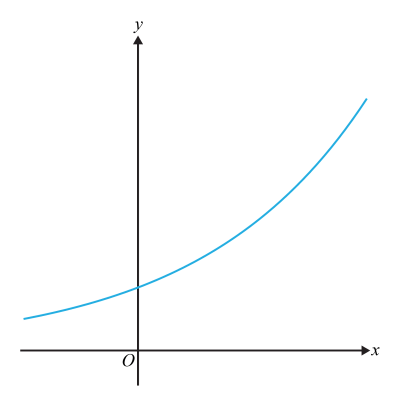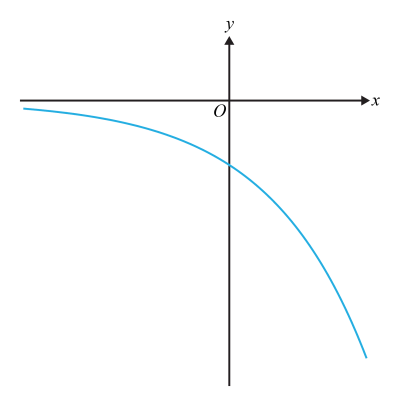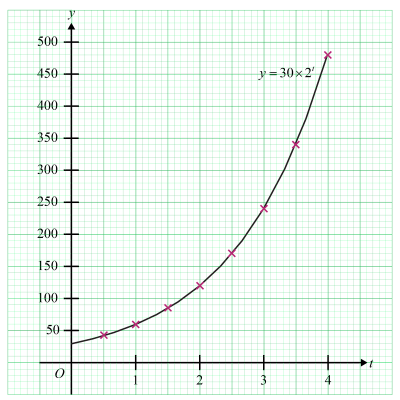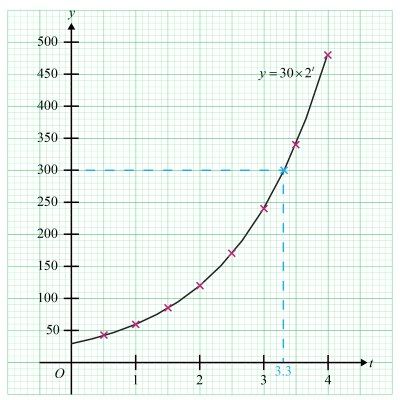Graphs Of Functions And Graphical Solution
In this particular article, we will be learning about graphs of functions and graphical solutions. We will learn about:
- Graphs of exponential functions.
- Solving an equation by graphical method.
This article is specifically written to serve the requirements for Secondary 3 Mathematics.
Graphs of Exponential Functions y=kax
- Exponential means a number to the power \(x\).
Example: \(2^x \)
- A curve is called the exponential curve, when there is a sudden sharp increase in the curve.
- The curve should not touch the x-axis. It can be above or below the x-axis.
There are different types of graphs present. Those are explained below.
- \(y=ka^x\), where \(a > 1\), \(k >0\), which means the value of \(k\) will be a positive number.

If \(k\) is positive, the curve will be above the x-axis.
Let us consider the equation, \(y = 2^x\).
For example, if the value of \(x\) is as shown below,
| \(x\) | \(-1\) | \(0\) | \(1\) | \(2\) | \(3\) |
| \(y\) | \(?\) | \(?\) | \(?\) | \(?\) | \(?\) |
To find \(y\), substitute the value of \(x\) in the equation \(y = 2^x\).
\(\begin{align*} x &=-1 \\[2ex] y &= 2^{-1} \\[2ex] y &= \frac {1}{2} \end{align*}\)
Calculate the rest by using the above method.
Therefore, we get the following table,
| \(\displaystyle{x}\) | \(-1\) | \(0\) | \(1\) | \(2\) | \(3\) |
| \(\displaystyle{y}\) | \(\displaystyle{\frac {1}{2}}\) | \(1\) | \(2\) | \(4\) | \(8\) |
The value of \(y\) increases sharply. When plotted as the graph, the curve also will increase sharply.
- \(y=ka^x\), where \(a > 1\), \(k <0\), which means the value of \(k\) will be a negative number.

If \(k\) is negative, the curve will be below the x-axis.
Question 1:
A number of bacteria are introduced to a culture. The number of bacteria \(y\), in the culture \(t\) hours after they are first introduced is given by the formula \(y = 30 \times 2^t\).
The table shows some corresponding values of \(t\) and \(y\), correct to 3 significant figures.
| \(\displaystyle{t}\) | \(\displaystyle{0.5 }\) | \(\displaystyle{1}\) | \(\displaystyle{1.5}\) | \(\displaystyle{2}\) | \(\displaystyle{2.5}\) | \(\displaystyle{3}\) | \(\displaystyle{3.5}\) | \(\displaystyle{4}\) |
| \(\displaystyle{y}\) | \(\displaystyle{42.4}\) | \(\displaystyle{60}\) | \(p\) | \(\displaystyle{120}\) | \(\displaystyle{170}\) | \(\displaystyle{240}\) | \(\displaystyle{339}\) | \(\displaystyle{480}\) |
- How many bacteria are introduced to the culture at the start?
Solution:
Since we have to calculate the bacteria introduced at the start, the time \(t\) is \(0\).
Substitute \(t=0\), in the equation \(y = 30 \times 2^t\).
\(y = 30 \times 2^0\)
The value of any number with power \(0\) is \(1\).
\(\begin{align*} y &= 30 \times 1 \\ \\ y &= 30 \end{align*}\)
The number of bacteria introduced at the start is \(30\).
- Calculate the value of \(p\).
Solution:
The value of \(t\) corresponding to the \(p\) is \(1.5\) from the table.
Therefore, when \(t=1.5\), \(y=p\).
Substituting the above value in the equation \(y = 30 \times 2^t\).
\(p = 30 \times 2^{1.5}\)
Solving the above equation will give the following answer
\(p =84.9\)
- Using a scale of \(2\,cm\), to represent \(\mathrm{1\,unit}\), draw a horizontal t-axis for \(0 ≤ t ≤ 4\).
Using a scale of \(1\,cm\), to represent \(\mathrm{50\,unit}\), draw a horizontal y-axis for \(0 ≤ y ≤ 500\).
On your axes, draw a graph to show the number of bacteria in the culture for \(0 ≤ t ≤ 4\).
Solution:
The specifications about the graph scale is given in the question. Following those we are drawing a graph. And plotting the values given in the table. Join the plotted value to get the graph curve.

- Use your graph to find how many hours it takes for the number of bacteria to reach \(300\).
Solution:
- Mark \(300\) in the y- axis.
- Draw a horizontal line from this point till it meets the curve.
- Then draw a line towards the t-axis.
- Note the value of the point it meets at the t-axis.

Therefore the hours it takes for the number of bacteria to reach \(300\) is \(\mathrm{3.3 \,hours}\).
Conclusion
In this article, we learned about graphs of exponential functions and how to solve an equation using a graphical method as per the Secondary 3 Mathematics syllabus.
| Continue Learning | |
|---|---|
| Further Trigonometry | Quadratic Equations And Functions |
| Linear Inequalities | Laws of Indices |
| Coordinate Geometry | Graphs Of Functions And Graphical Solution |
| Applications Of Trigonometry | |
 SG
SG  VN
VN 









